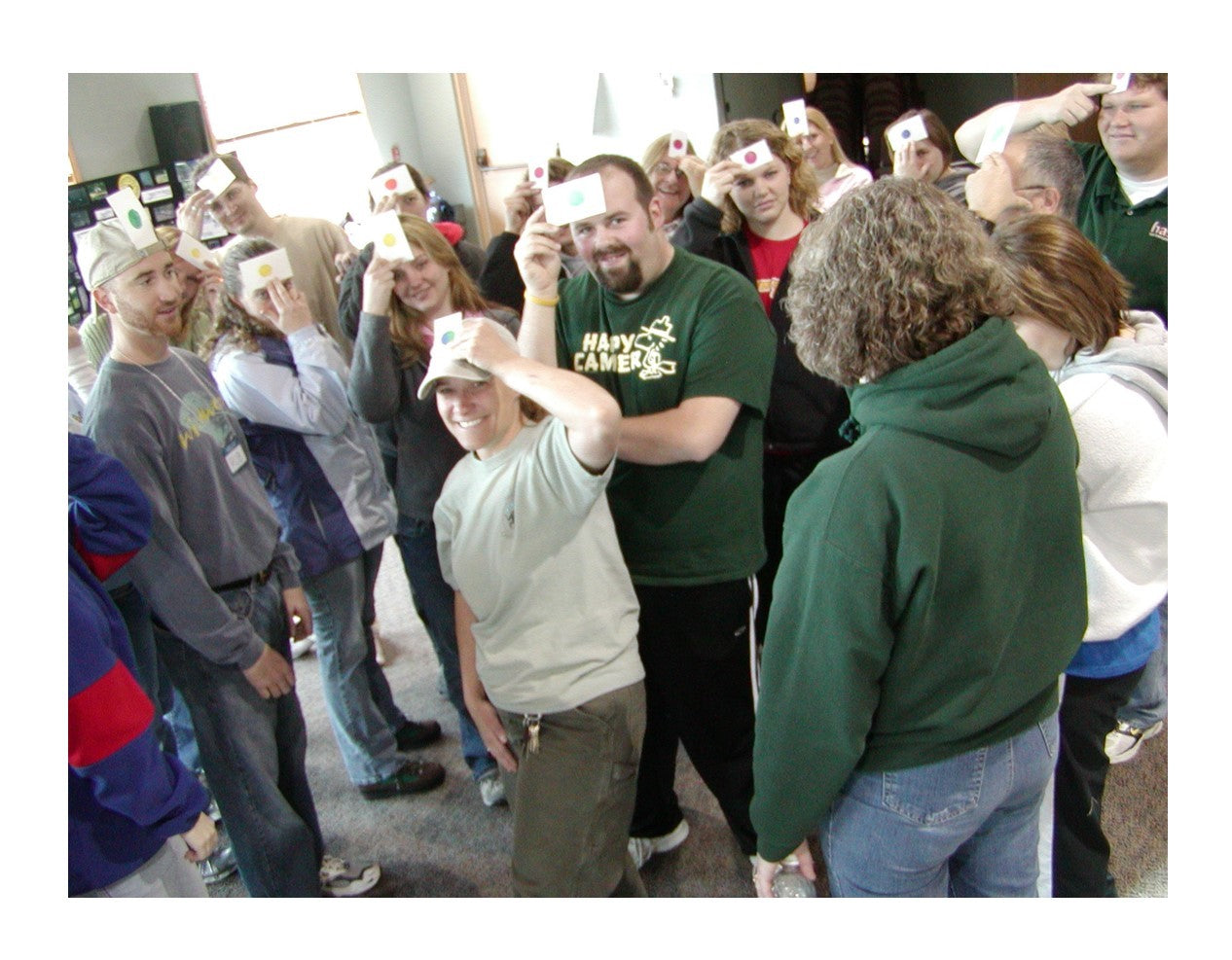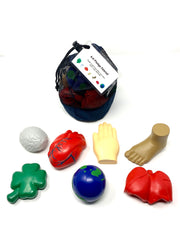Diversity Dots
Diversity Dots: A Unique Activity for Exploring Diversity, Equity, and Inclusion
Foster compassion, intersectional awareness, and meaningful conversations around Diversity with Diversity Dots. This engaging activity uses a collection of laminated, colored dot cards to help participants understand, support, and celebrate diverse identities within their group.
Key Features:
-
Inclusive Group Size: Designed for groups of 10 to 50 participants, making it ideal for classrooms, workshops, and team-building sessions.
-
Varied Dot Cards: Includes a wide variety of solid and mixed-color dot cards, plus one unique solid dot card to create dynamic group interactions.
-
Silent Grouping Challenge: Participants receive a dot card placed on their forehead without seeing it and must silently find their groups, encouraging nonverbal communication and observation.
-
Insightful Dynamics: The activity naturally reveals group dynamics such as majority influence, leadership emergence, inclusion, and exclusion.
-
Comprehensive Debrief: Thought-provoking questions guide reflection on grouping behaviors, social identity, inclusion, and real-life applications.
-
Complete Kit: Comes with 50 laminated, colored dot cards (5x7), a mesh envelope for storage, and detailed instructions.
Why We Love It:
Diversity Dots is a powerful and unique tool that brings inclusion discussions to life through experiential learning. Its simple yet profound design encourages participants to experience and reflect on social dynamics, inclusion, and identity in a safe and engaging way. Facilitators appreciate how it sparks empathy, awareness, and meaningful dialogue, making it an essential addition to any diversity and inclusion program.






